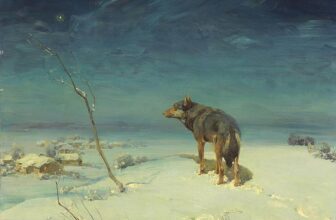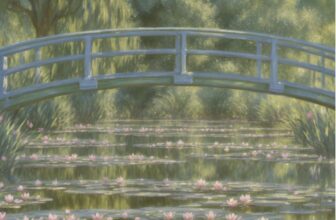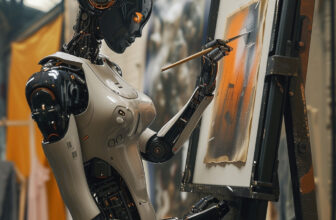
Original Artwork Digital Fine Art Ai
Dance At The Moulin De La Galette Painting
Dance at the Moulin de la Galette is a painting created by Pierre-Auguste Renoir in 1876, which is currently housed at the Musée d’Orsay in Paris. The painting depicts a scene from the bustling Moulin de la Galette, a popular dance hall located on the Butte Montmartre in Paris. It is considered one of Renoir’s most famous works and is widely regarded as a masterpiece of Impressionist art.
The Moulin de la Galette was a meeting place for artists, writers, and socialites of the time, attracting a diverse crowd of people. It was famous for its outdoor dances, which were held on Sundays, and were a highlight of Parisian nightlife. Renoir, who was a regular visitor to the dance hall, was captivated by the lively atmosphere and colorful characters that he observed, and it was these observations that inspired him to create Dance at the Moulin de la Galette.
The painting depicts a crowded scene of people dancing, drinking, and socializing at the Moulin de la Galette. The figures are painted in a loose, gestural style, which captures the dynamic movement and energy of the scene. Renoir used bright, vibrant colors and a shimmering, dappled light to create a sense of warmth and conviviality, as if the viewer is a part of the festive gathering.

Dance At The Moulin De La Galette Painting
One of the most striking aspects of the painting is the way in which Renoir has captured the different personalities and interactions of the figures in the scene. There are couples dancing in the foreground, groups of people chatting and laughing in the mid-ground, and musicians playing in the background. Renoir’s keen eye for detail and his ability to capture fleeting moments of human interaction is evident in the way that he has depicted the subtle nuances of facial expressions and body language.
The painting is also notable for its composition, which is both balanced and dynamic. Renoir has placed the figures in the foreground and mid-ground in a way that draws the viewer’s eye into the scene, while the background is filled with the atmospheric haze of the Moulin de la Galette’s environs. The sense of depth and space in the painting is created through the use of perspective and the careful placement of the figures in relation to one another.
Dance at the Moulin de la Galette was created during a period of great experimentation in the arts, when artists were breaking away from the traditions of academic painting and exploring new ways of representing the world around them. Impressionism was a movement that sought to capture the fleeting effects of light and color, and Renoir was one of its most celebrated practitioners. In Dance at the Moulin de la Galette, he has used the techniques of Impressionism to create a vivid and dynamic portrayal of a moment in time, capturing the essence of Parisian life in the late 19th century.
The painting has become an icon of French culture and is widely celebrated as a masterpiece of Impressionist art. It has been reproduced countless times in prints, posters, and postcards, and has inspired countless artists and designers. Its enduring popularity is a testament to Renoir’s skill as a painter and his ability to capture the essence of human experience in his art.
Dance at the Moulin de la Galette is a remarkable painting that captures the essence of Parisian life in the late 19th century. Renoir’s keen eye for detail and his skill as a painter are evident in the way that he has depicted the bustling scene at the Moulin de la Galette. The painting is a masterpiece of Impressionist art and is widely regarded as one of Renoir’s greatest achievements. Its enduring popularity is a testament to the power of art to capture the human experience and to inspire us






